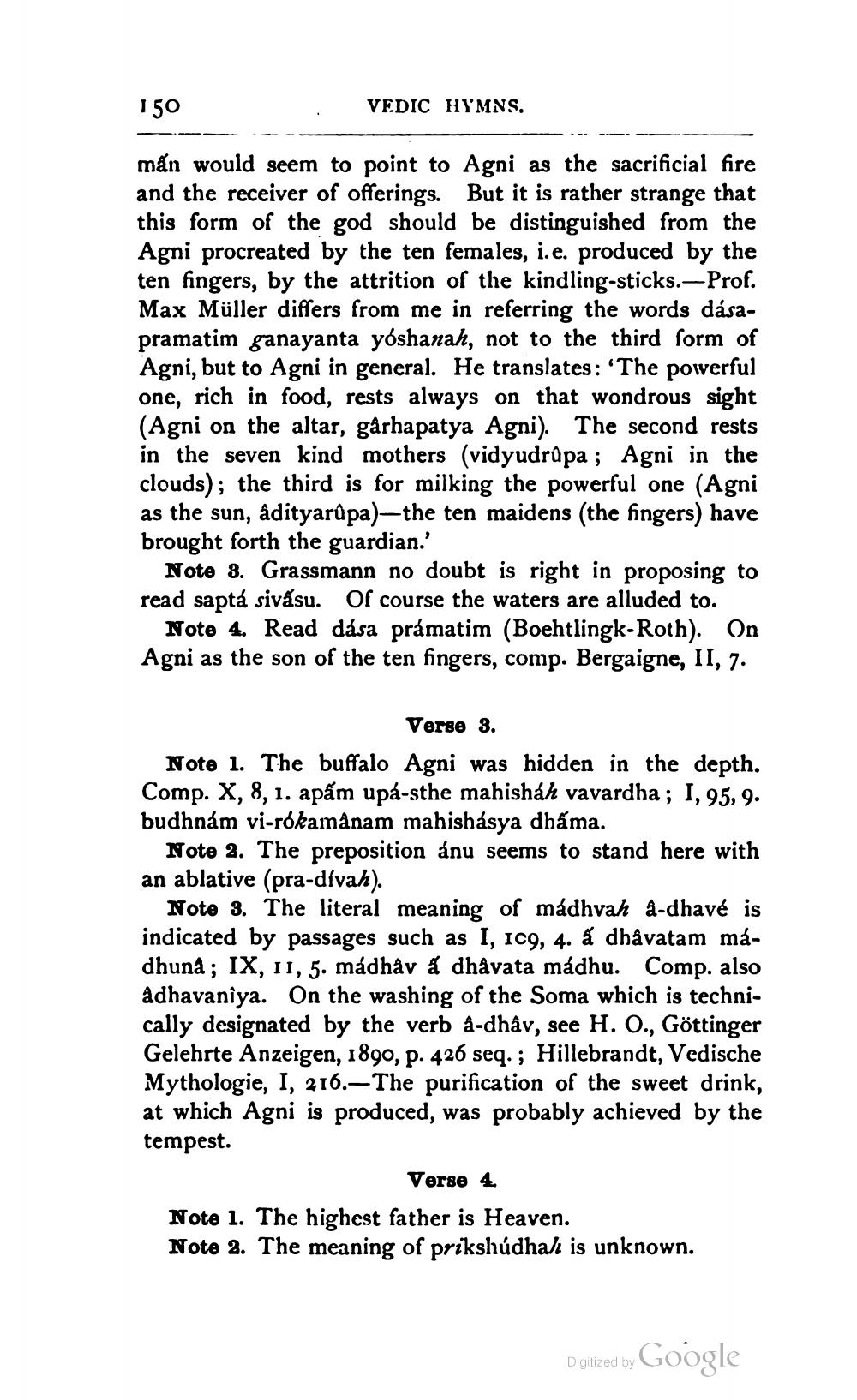________________
150
VEDIC HYMNS.
mấn would seem to point to Agni as the sacrificial fire and the receiver of offerings. But it is rather strange that this form of the god should be distinguished from the Agni procreated by the ten females, i.e. produced by the ten fingers, by the attrition of the kindling-sticks.-Prof. Max Müller differs from me in referring the words dásapramatim ganayanta yóshanah, not to the third form of Agni, but to Agni in general. He translates: 'The powerful one, rich in food, rests always on that wondrous sight (Agni on the altar, gårhapatya Agni). The second rests in the seven kind mothers (vidyudrûpa ; Agni in the clouds); the third is for milking the powerful one (Agni as the sun, adityarūpa)—the ten maidens (the fingers) have brought forth the guardian.'
Note 8. Grassmann no doubt is right in proposing to read saptá sivásu. Of course the waters are alluded to.
Note 4. Read dása prámatim (Boehtlingk-Roth). On Agni as the son of the ten fingers, comp. Bergaigne, II, 7.
Verse 3. Note 1. The buffalo Agni was hidden in the depth. Comp. X, 8, 1. apám upá-sthe mahishah vavardha; I, 95, 9. budhnám vi-rókamânam mahishasya dhấma.
Note 2. The preposition ánu seems to stand here with an ablative (pra-divah).
Note 3. The literal meaning of madhvah a-dhavé is indicated by passages such as I, 109, 4. a dhâvatam mádhuna; IX, 11, 5. mádhåv å dhåvata madhu. Comp. also adhavaniya. On the washing of the Soma which is technically designated by the verb à-dhâv, see H. O., Göttinger Gelehrte Anzeigen, 1890, p. 426 seq. ; Hillebrandt, Vedische Mythologie, I, 216.—The purification of the sweet drink, at which Agni is produced, was probably achieved by the tempest.
Verse 4 Note 1. The highest father is Heaven. Note 2. The meaning of prikshúdhah is unknown.
Digitized by Google




